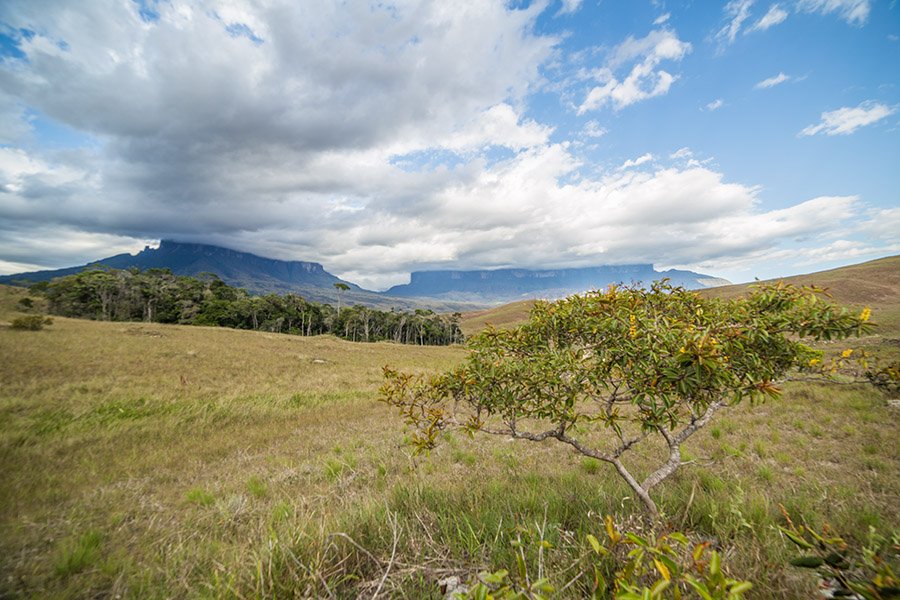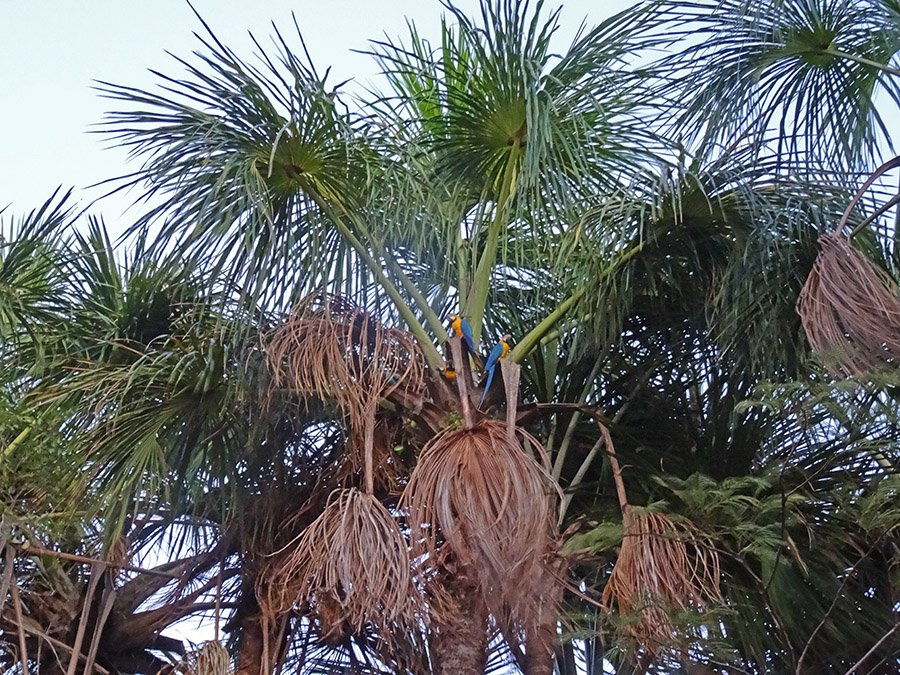The Gran Sabana: Where Tepuis Touch the Sky
Discover Venezuela’s lost savannah — a place of floating mountains, ancient rock, and landscapes so surreal they inspired myths.
Step into a world where mountains float on clouds, rivers shimmer through endless plains, and time stretches back two billion years. This is the Gran Sabana — and it’s unlike anywhere else on Earth.
In southeastern Venezuela, the horizon doesn’t end. It rises. Sheer cliffs erupt from golden grasslands, forming massive, flat-topped mountains called tepuis — ancient giants so surreal, they inspired the legends of lost worlds.
Spanning over 10,000 square kilometres, the Gran Sabana is the beating heart of Canaima National Park, a UNESCO World Heritage Site. But this isn’t just a landscape. It’s a living relic of Earth’s deep past — and a reminder of just how much we still have to discover.
The Virtual Hike: Journey to the Base of the Tepuis
This field trip begins in the remote village of Paraitepuy, where a narrow trail winds out into the savannah. You’ll walk 15 kilometres across open plains, cross the glassy Rio Tek, and pass beneath the silhouettes of moriche palms as they sway in the breeze.
With every step, the tepuis draw closer — towering higher, darker, and stranger. Mount Roraima and Kukenán Tepui rise like massive stone islands in a sea of grass. As the sun sinks and the clouds roll in, their peaks vanish into mist — leaving only silence, scale, and the feeling that you’ve entered another world.
What Makes the Gran Sabana So Special?
- The Gran Sabana is a place where time feels different — because it is. This is one of the oldest exposed landscapes on the planet, shaped long before the rise of dinosaurs, rainforests, or even continents as we know them.
- The Pemon people, guardians of this region, have lived here for centuries. They use controlled fire to renew the savannah, in a tradition that maintains ecological balance and invites new life after every burn.
- Above them rise the tepuis — towering, flat-topped mesas with near-vertical walls that soar over 1,000 metres high. These are not just mountains; they are evolutionary islands, each summit cut off from the world below. Some host hundreds of species found nowhere else on Earth.
- And among them, none is more iconic than Mount Roraima — a brooding giant that inspired Sir Arthur Conan Doyle’s The Lost World. In a way, he wasn’t wrong.
Stone, Rain, and Time: How the Tepuis Were Born
The Gran Sabana sits atop the Guiana Shield, a colossal slab of Earth’s crust more than two billion years old. It’s a geological time machine — a place where the land has hardly changed while the rest of the world evolved around it.
The tepuis themselves are the last remnants of an enormous sandstone plateau that once blanketed the region. Over hundreds of millions of years, wind and rain sculpted the land, stripping away everything but these stone sentinels. Their sheer cliffs and isolated peaks became the perfect incubators for evolution in solitude.
Some tepui summits are cloaked in cloud almost year-round. On these misty mountaintops, strange life thrives — including pitcher plants that feed on insects, and crystal pools where micro-ecosystems evolve unseen.
These peaks are so isolated, they might as well be separate worlds.

The Savannah Below: Alive with Colour and Sound
While the tepuis command the skyline, the grasslands at their feet are just as alive — and just as surprising.
Golden plains ripple in the wind, dotted with wildflowers and the elegant silhouettes of moriche palms (Mauritia flexuosa). These palms are more than beautiful — they’re essential. Their fruits feed animals, their trunks house insects, and their leaves provide shelter for everything from macaws to monkeys.
In the rivers, armored catfish glide through the clear water, while giant otters hunt in stealthy pairs. On land, capybaras, anteaters, and deer graze beneath wide skies, and high above, hawk-eagles circle on thermals in search of prey.
Even the tiniest creatures astonish. Sundew plants (Drosera) sparkle with dew — but these droplets are deadly. They trap and digest insects to survive in the nutrient-poor soil. And termites, often overlooked, play a vital role in recycling nutrients and sustaining the ecosystem’s hidden energy.
The Gran Sabana may look quiet, but every inch is buzzing with life.

Part of a Bigger Puzzle: The Guianan Savanna Ecoregion
The Gran Sabana isn’t just a local wonder — it’s a vital piece of the Guianan Savanna Ecoregion, a vast ecological corridor linking the Amazon rainforest to the Guiana Highlands.
This region is shaped by fire, weather, and time. Frequent burns — some natural, some traditional — help prevent forest encroachment, creating a dynamic balance between open plains and scattered trees.
Many plants here have adapted to extremes: drought, poor soil, fire. Some trap insects. Others grow slowly, biding their time until the rains return. It’s a landscape of survival and adaptation, where beauty and resilience go hand in hand.
And through it all, the rivers flow — carving paths through ancient rock, nourishing life, and connecting one biome to the next.
Final Reflection: What Does Wild Really Mean?
To stand in the Gran Sabana is to feel small — in the best possible way. Here, the Earth speaks in stone, silence, and distance.
It reminds you that wild places still exist, and that some corners of the planet are older, deeper, and more mysterious than we can imagine.
In this place, every tepui is a monument to patience. Every blade of grass is a survivor. And every step you take is a step back into deep time.